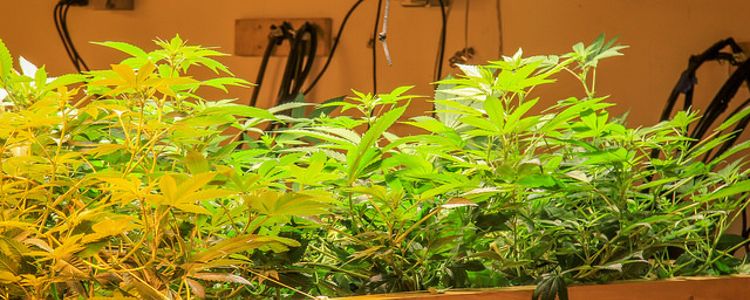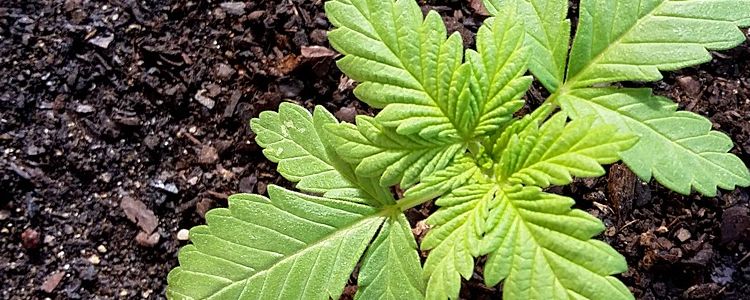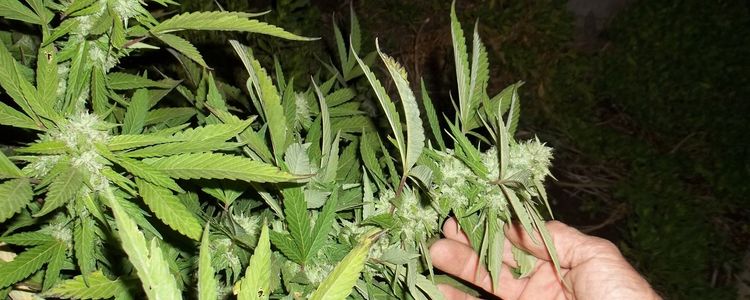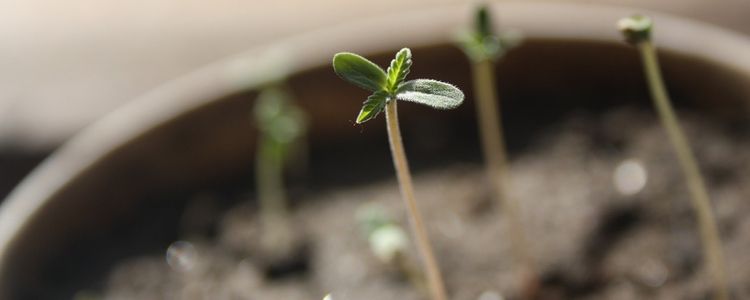With the rise of medicinal marijuana users and the need for good quality cannabis, some people would prefer to grow cannabis at home.
You are certainly not alone, it is becoming very popular around the world and especially in North America.
There is a huge interest in growing plants at home for various reasons such as saving cost and having full control over the chemicals used during production.
I write this post to act as a growing guide and give you all the information you need to start growing your own plants.
Growing Marijuana outside is not always a possibility due to legal or space constraints. It is ideal, however, most often than not, it is not possible.
Fortunately, nowadays, growing your own cannabis can easily be made possible with the use of marijuana growing kits available all over the internet.
Once you think you are ready to grow your own marijuana, you need to consider the following,
- Knowing the legalities (is it legal to grow it where you live)
- Picking of the right strain
- Using the right materials needed for the grow, harvesting and drying of the bud
Before you proceed any further, find out the legalities of growing your own plants in the exact area you live in. Needless to say that laws and regulations change often by local government and the difference could be huge.
In the US you could be allowed to grow cannabis in your home in one state, while another state would put you to a federal jail for the same. Even if you know you are allowed in your local state or country where you live, double-check on the rules and know how many plants you can have and how many of those can be in flower at any given time.
Make sure you do your research, nothing substitutes that but legal advice.
Let’s get started…
How to Grow Cannabis at Home…
1. Choosing the right strain that suits the need

Cannabis and all its glory, has 2 main types, the Cannabis Sativa and the Cannabis Indica. (Ok, there is a third family member, Cannabis Ruderalis, however, I won’t go into that now.)
The only other thing I want to mention here is that all of these Cannabis family members are inter-breedable, in other words, they can produce a hybrid. So when you see Hybrid strains, they are usually crosses between Sativa and Indica.
There are a lot of strains that contain different levels of the medicinally useful ingredients, such as THC, and Cannabidiol (CDB). The strains of each cannabis type will also differ in smell and taste due to the unique terpene profile of the strains.
How to decide on what strains to grow?
- Most often, your medical professional will help you at least with a guide on what strains you should use as different strains help different conditions.
- The flower is what contains the medicinal ingredients of the plant. You are growing your plants for their flower, so it is worth noting that different strains may require more or less time to bring flowers. Remember that Cannabis is a Dioecious plant meaning it has separate female and male plants, only the females bring flowers and seeds. I have to mention that under intense stress the female plants can become hermaphrodites and bring male flowers as well, however you may not need to know too much about that at this point of time.
- Having access to seeds will certainly improve the range of variety that you have to chose from. Clones are a very popular way to grow and they are supplied as little tissue culture rooted plants. There are only so many strains that are available as clone ‘babies’, so having access to seeds will definitely increase the number of strains you can grow.
2. Setting up ‘The Grow Room’

It is important that you create a suitable environment for growing your plants in. Depending on what you have available at home, you can grow your plants in a spare room or even in a cupboard. If you’d like to take it to the next level, you can check out a grow-box or grow-tent that are quite practical and can make a more organized growing operation happen.
Here are what you need to think of when you are choosing an area for growing your plants:
- Having sufficient power accessible to the grow room is key for an undisrupted growing cycle. You don’t want to lose power in your lights, hydroponic system and fans. Indoor growing has a significant power requirement, so make sure you are prepared with power plugs and extension cables.
- Purchasing a reliable timer may be a good idea when growing indoors. A good timer can help you set your lighting times, so you don’t have to manually turn your lights on and off.
- Proper ventilation is also a necessity for the grow room. The cannabis plant requires a natural circulation of air, a regular ‘breeze’ for optimal growth and pest protection. Proper distribution of carbon dioxide in the plants is also necessary for a good grow.
If you grow in your spare room for example and you have windows, which is a great way to naturally ventilate the growing area, you may not require a fan. However, in more closed growing conditions, such as a cupboard or an attic, fans for ventilation are often inevitable for optimal plant health.
- Installing measuring devices for checking the right humidity, temperature and pH for the plants.
- Good drinking quality water is necessary in order for the cannabis plant to grow and stay healthy. Having water under a pH level of 7.0 should be avoided where possible as Cannabis does not like acidity. Chlorine should be also avoided where possible. Most councils around the world do put chlorine into the water, so it is advised to either filter it out or let the water stand for about 24 hours before watering the plants, so the Chlorine have time to evaporate out of the water.
3. Cultivation of Cannabis at home

When cultivating indoors, germinated seeds, a good system, proper soil and nutrient solutions can yield you the best harvest possible for your grow. It is important to note that your ultimate goal is to have the plant to flower, so proper maintenance with the right nutrients can go a long way.
- Germinating the seed means having seeds to sprout before actually transferring it over to its permanent pot. Seeds are best germinated in a warm and dark place on a damp surface. If seeds don’t germinate in 24 – 48 hours, try transferring the seeds in warm water and monitor for another 24 hours. Sometimes it can take up to a week to germinate, so stay patient before you chuck any seeds out.
- The system you choose to grow your plants can be soil based or hydroponic.
Soil based growing – basically this is the traditional growing method of growing the plants in normal, organic soil.
Hydroponic production system where soil is replaced with an inorganic growing material and nutrients are provided via a liquid solution. This is made up of water and a water soluble fertilizer and any other additives for plant growth or health. The grow-box and grow-tent already come with a hydroponic system. This is a little more harder to set up manually and can even be expensive, although there is a huge variety of kits available online.I have grown lots of plants in soil and hydroponically and I personally believe that for beginners, it is so much easier to grow in soil to start with. Make sure you choose a good quality potting mix in your local hardware store and you should be fine. I don’t recommend soil from your garden as you need ‘sterile’ soil to ensure it is free of pests, especially bacteria, fungi and insects. You need potting mix that has good drainage with the pH between 6.5 and 7.5. When you plant in soil, you can use a 5 liter pot to put your germinated seed (or tissue culture clone) in there.Once you get the hang of producing in traditional soil based system, you can always experiment with the awesome world of hydroponics.
- Proper Nutrient is needed to boost your plants’ growth and yield the best flower in the time of harvest. Regardless if you grow your plants in soil or hydroponically, you need to be able to get the right nutrients to them. This is done via your soil and fertilizer.
Organic: If you’d like to keep your plants organic, your options for nutrition are a little limited. You’ll need organic matter, such as compost or worm castings in your potting mix and seaweed concentrate diluted into the water used to water the plants.
Non-Organic: There are plenty of fertilizers to choose from that are suitable for cannabis. Remember that fertilizers are salts and make the growing medium (soil) acidic.
Cannabis does not like acidic soil, so be careful with how much fertilizer you apply to the soil. Once the plants are over 5 weeks old, you can dilute water soluble fertilizer (seaweed concentrate for organic growing) and spray the solution to the leaves as they can absorb water and nutrients not only through their roots, but their foliage as well.
- Light is needed for vegetative growth and cannabis happens to need a lot of light for optimal growth, especially for good quality medical cannabis. You must have lights in your indoor operations as we briefly discussed above. Indica and Sativa strains are both maturing and flowering dependent on the duration of light they receive during the day. The less daylight they receive the quicker they will mature and go into flower. You don’t want this to happen prematurely, so initially you need to supply a lot of light (12 hours +) for your plants.
Your fluorescent plant lights go about 5cm above your plants and you need to move them up very regularly during the growth period.
Available lighting options:
CFL – Compact fluorescent lights are suitable for seedlings, and early growth however, they are not the best suited for later stages of growth.
ML – Metal halide lights are heavier in the blue spectrum, making them suitable for use during the plant’s vegetative growth.
HPS – High pressure sodium lights are heavier in the orange spectrum, making them best suited to use to induce flowering.
LED – Light emitting diode are suitable for both vegetative growth and flowering stages. They are the most energy efficient and don’t produce heat as opposed to the above 3. LED lights also unique in a way that they don’t attract insects as other lights do, so you have less likeliness of attracting harmful insects to your crop with LED lights.
Other growing conditions to look out for are air humidity and temperature. The humidity you need to keep low if possible, to help avoid mildew and to enable the resiny coat building up on the leaves. Temperature should be between 20 – 25 Celsius (68 – 78 Fahrenheit).
- Plant protection is something that needs to be on the back of our mind from day one to harvest and even beyond. Any type of bacteria, fungi or insect that may find our plant a suitable host will cause issues. That is why sterilised soil is so important and this sets the tone for prevention being more important than cure. Focus on prevention as much as possible by making sure you don’t visit other gardens before attending your plants as you may carry bacteria or fungi on your skin and/or clothes. You can even carry in insects this way, so always be careful.
The most likely problems you’ll have are mildew type moulds due to poor ventilation or insect problems, such as mites. Spider mites can cause a real problems, they are small and hard to detect and once you identify them, they are hard to kill. If you are growing organically, you may try Echo-oil Neem oil or Eucalyptus oil. These applied form a ‘film’ on the foliage and on the mites, making it more difficult for them to feed on the plant and to breed.
4. Harvest and curing of the flower and bud

As we discussed above, the time it will take for your plants to flower are mostly dependent on the strain and on the lighting conditions.
You can check the Pistils and Trichomes to determine if your plants are ready for harvest 2-4 months after flowering.
Pistils are tiny white hairs in the flower, making sure that these hairs darken before harvest ensure a high THC content in your bud.
Trichomes are the crystal like glitters that accumulate once your plant flowers. You can see them by using a magnifying glass. These little mushroom like crystals change in texture over time, cloudy trichomes usually represent a good time to harvest your flowers.
You can use the ‘old school’ method and pull out the plants and hang them upside down or you can simply cut the plant and harvest its flowers.
Careful handling of the bud should be observed to minimize a loss in Trichomes which fall off the flower easily.
Simply hanging stems to dry to the point where the stem cracks when bent. In this stage, you should plan for curing.
Trimming the bud of excess leaves that have no medicinal value is also done before curing. This is to ensure that your product is high quality and buds possess only the good stuff, excess leaves and seeds may affect consumption of cannabis.
Curing the plant can take up to 3-6 months.
Ideal curing conditions are dry (50% or less humidity) and warm ( 20 – 25 Celsius, 68 to 78 Fahrenheit)
By placing the buds in a jar which has approximately 65% of air at a time, the flower releases those compounds that give it a grassy smell and taste, ultimately drying the bud to a max for use.
It is important to open the jar and allow air exchange to happen at least twice a week. You can determine if the flower is ready and dry enough to use when buds are easier to split and burn.
5. Storage

Storage of Cannabis after curing is also very important. You want your flowers to be stored in lockable glass jars to ensure freshness and potency for long term use. This is also to keep molds and pest away from your homegrown buds.
Always ensure that children or unauthorized people can’t access your stash.
Enjoy the fruit of your hard labour.
What strain is your personal favorite? We’d like to know! Share it below!
- How to Use Waxmaid Honey Pen? - April 9, 2024
- How To Choose The Best Electric Dab Rig For Christmas - December 7, 2023
- Maintenance Matters: Keeping Your Glass Water Bong in Pristine Condition - October 9, 2023


